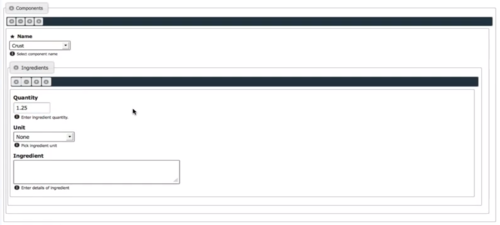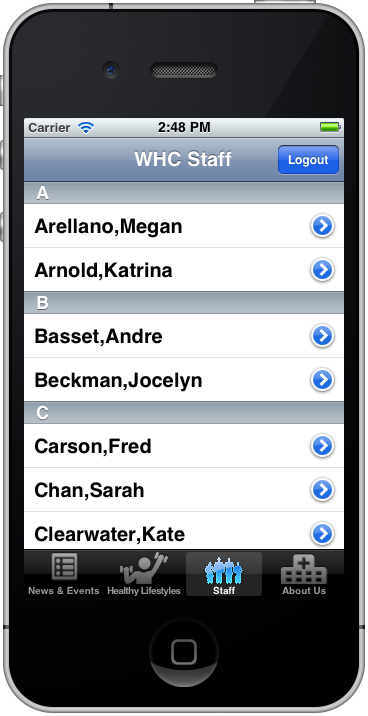10 Cool Things You Can Do With Cloud CMS
Aug 24
10. Fortune Cookie
9. Weight Loss Tips
8. Cheese Cake Receipt
7. Photo Album
6. Organization Chart
5. User Reviews
4. PDF Preview
3. Food Web
Gitana Dev Blog
Aug 24
10. Fortune Cookie
9. Weight Loss Tips
8. Cheese Cake Receipt
7. Photo Album
6. Organization Chart
5. User Reviews
4. PDF Preview
3. Food Web
Aug 21
Last week, a really interesting post was authored by Andrew Chen on why mobile application startups are bombing out like it was 1999.
Andrew’s main point is that mobile startups approach the application market using a “hail mary” kind of development approach which is similar to how web sites were delivered in the late 90’s. He also compares the investor mentality today with that of the late 90’s.
I really enjoyed Andrew’s article and also enjoyed the comments. In particular, I was inspired by some comments by Jeff Kesselman.
He wrote:
What we need is a return to what the early VC’s knew– that real companies with lasting value aren’t built in 9 to 12 months. That a proper runway for a new concern is 3 to 5 years of hard effort. Creating value takes resolve and commitment to a vision… something that has been undervalued in the past 5 years or so.
In short, what we need are *investors* again, not the quick-hit oriented gamblers the investment community has turned into.
In my view, Jeff completely gets it right. Most mobile startup companies are completely oriented toward the short-term. They’re gambling. They build as little as necessary, throw it out there and hope for a quick win. They’re throwing a hail mary pass with the hopes of making a big splash on the App Store. If nothing comes of it, oh well. Investors chuck it out and try again.
In the spirit of Andrew’s article, I want to focus on two key differences between 1999 and today - the Gold Rush Mentality and the App Store. These differences are such that the traditional, quick win approach to building applications is largely unprofitable.
I’d like to then take the argument and focus it on what it means for your business, your mobile strategy and your customer experience within Cloud CMS.
Nothing. Heck, everyone loves a gold rush. The problem is that not every problem in business can be modeled as a gold rush. They’re not as common as the investment world would like you to believe.
However, in the late 90’s, there was a genuine Gold Rush.
Thus, anyone could jump in and play for cheap. This inspires lots of competition. Investors love this stuff. And they were particularly high on it given that they’d just come off of wave after wave of similar gold rushes like the microelectronics industry (late 70’s), personal computers (early 80’s), the software industry (80’s, 90’s), etc.
The Gold Rush mentality allows investors to gamble. They can take very little risk and reap some potentially very large rewards. Kind of like throwing a hail mary pass in football. It’s desperate, but it just might work. If you throw hundreds of them, chances are one of them may be caught.
I think a big part of the problem for mobile apps companies today is that they think they’re in the same kind of gold rush. They’re not.
It’s deceptively similar. After all, it’s free to download the mobile app kits from Apple or Google. You can build apps for free and test them locally. Also there is a huge market, expanding every day. There are 7 billion people in the world. So it’s kind of a land grab…
However, the problem arises when you get to the distribution model. The App Store. The App Store gives Apple centralized control of the distribution. It’s a great way for Apple to make some money. And it’s also a bad way for you to market your product. It’s hard to differentiate your product when you’re crammed into competing for the same Top 10 list as everyone else.
The world of 1999 didn’t have an App Store. Anyone could go to any web site at any time. The fact that you had a Mac computer didn’t mean you couldn’t go to a web site run by an Windows computer. The mobile world essentially collapses down into Apple or Android. They’re incompatible and they’ve got a lock on the distribution model.
And that’s bad for the industry. That’s like having a Gold Rush where you had two mountains to mine. One is called Apple and the other Android. Only 1-5 competitors are allowed access to the mountain at a time. And in order to get access, you have to place 1-5 in their Top 10 List.
This means that very few companies get to reap the rewards. Most sit around waiting, trying to get on the Top 10 List. If they do, then they get lots of downloads. Gold Rush time! Those that do not… well, they sit around and wait. And wait. And eventually they are eaten by vultures.
The mobile startup space is nuts.
Some of the commenters from Andrew’s article speculated there were 3-5 years left of runway before the remaining 3 billion non-mobile human beings on the planet get smart phones and can be “monetized”. I don’t think that’s the right goal nor do I think the industry has that much time.
Consider, for example, that the bulk of people who have discretionary income already have phones and are buying apps. If/when the economy double dips, that discretionary income will evaporate. And so will the revenue from app sales. Who will want to play Angry Birds instead of feed their family? (i hope no one raises their hand)
However… none of this changes the fact that billions of people around the world will now and forever more be empowered with smart devices. These devices are personal extensions of their human being. Think about. Your phone goes everywhere with you, doesn’t it? I mean… everywhere. Right?
And when was the last time you shared your phone with someone?
For businesses that are in it for the long haul, the fact that 7 billion people around the world have smart phones has nothing to do with the App Store or Gold Rushes. It has to do with building closer relationships with your customers. It has to do with connecting and fostering loyalty.
The mobile market provides a way for you to connect with your audience. Like never before. Never. It’s never been the case, ever, that you could go peer-to-peer from business to an individual customer like this. It essentially allows you to segment your market by the individual.
That’s a pretty exciting future. To achieve it, you need to stop thinking of your applications as simple, throwaway projects that people get to from the App Store.
Forget the App Store.
As more devices are introduced across a myriad of form factors and devices, you’re going to need to stop thinking about the individual app and start thinking about how multiple applications will work together to deliver an intuitive digital experience.
How will you build applications that follow your customers from device to device, always there for them when they need you? How will your business shuffle data between apps, maintain sessions and provide real-time analytics to your marketing teams? How can you make your mobile interfaces personalize in real-time around the needs of your users?
At Cloud CMS, we’re very much aligned to this vision. Our Cloud Platform provides the ideal backend for your mobile applications and digital experiences. We’ve worked from day one with a belief that building connectedness between businesses and their customers will require a digital experience platform. And that’s what we deliver.
Cloud CMS is a scalable, feature-rich platform that empowers applications with all of the backbone capabilities needed to deliver powerful digital experiences. It lowers the cost of development, quickens the pace of deployment and delivers powerful insights into your customer behavior, needs and lead generation.
If you’re building mobile applications for iOS, iPhone, iPad, Android, Windows Mobile or other devices, you might want to give Cloud CMS a try. We also have drivers for mobile, web and HTML5 applications running on (JavaScript, jQuery, PhoneGap, Titanium, Dojo and Sencha Touch).
We offer free trials, videos and Quick Start Guides for developers.
Aug 1
When we designed Cloud CMS, we wanted to give our customers the choice of running the platform both in the cloud and on-premise. The cloud makes sense for a lot of infrastructure needs but we recognize that some of our customers will want to have their own hosted installation of the platform.
We also wanted to give our customers the ability to push and pull data between their on-premise installations and the cloud platform (whether our public installation or a private cloud the customer runs). There are times where it’s better to take advantage of the elastic storage and capacity of the cloud and other times where data is better suited to live on-premise.
To achieve this, Cloud CMS offers two-way replication. It’s very similar to Git in that you can push and pull changes between your local installation and a cloud installation.
To pull, you browse the cloud and find a resource you would like to pull down into a local copy. You then export that resource into an archive. And then, on your local installation, you simply import the archive via its URL. Your local copy of Cloud CMS will download the archive and seamlessly produce a replication of the data on your local instance.
Archives are stored in vaults and basically comprise a snapshot of the data along with all of its dependencies. Archives are a lot like Maven Artifacts (if you’re familiar with Maven, Ivy, Gradle or other dependency management / build lifecycle tools). They can contain either all of the data of your export or a partial subset depending on whether you’ve bounded the export by date or changeset IDs (in the case of changeset-versioned branches).
You’re free to work locally on your data and if you choose, at any time, you can push your data back to the cloud. It’s basically the same operation but in reverse. You export the archive. And then, you either pull the archive to the cloud from the local installation or you push it from the local installation to the cloud. The former is applicable if your local installation is visible from the cloud (depending on your firewall / IT restrictions). The latter is often more preferable. But in the end, they accomplish the same thing.
Cloud CMS really looks to Git and Mercurial as examples of great versioning systems that really get it right in terms of being distributed, changeset-driven and replication-friendly. We didn’t seek to reinvent the wheel but instead opted to give our customers access to some wonderful tools for collaboration which, prior to Cloud CMS, were only available to command-line developers.